
The USDA recommends a minimum cooking temperature of 325 degrees Fahrenheit for beef, although traditional recipes may allow for lower temperatures. Slow-cooking beef at low temperatures, such as 275 degrees, makes for a more tender roast in most cases, but you may be risking your family's safety unless you prepare the beef properly.
Beef Cuts
Always cook ground beef at medium to high temperatures until it is cooked all the way through to an internal temperature of 160 degrees Fahrenheit. Bacteria gathers on the surface of meat, but with ground beef, what once was the surface is mixed in with the meat in general, leading to greater bacteria risk. Whole cuts of meat can be cooked at lower temperatures -- and to lower internal temperatures -- because one purpose of cooking is to kill that bacteria, and it has no way of getting to the center of uncut beef.
Safe Low-Heat Cooking
When cooking a whole roast at a low temperature, do not pierce the beef in any way -- including with a cooking thermometer -- until the beef's surface temperature is at least 160 degrees Fahrenheit. Otherwise, you can carry bacteria into the center of the beef with your cooking utensil, where it is cooler and the bacteria can survive. Use your hands or tongs to place the beef in a pan, and use tongs to turn it over, if necessary, without piercing it. At 275 degrees, you can slow-cook the beef for several hours safely, as long as the internal temperature reaches at least 140 before you take it out of the oven to serve.
Alternative Cooking Method
If you want to avoid the health risks associated with low-temperature cooking, roast your beef in a Dutch oven, which is a heavy covered roasting pan that will keep the juices in and keep the edges of your beef from drying out. Cook the beef at 325 degrees Fahrenheit in one of these pans for a flavor and tenderness that competes with slow, low-temperature roasted flavor but complies with USDA safety guidelines. You can also use a commercial slow-roaster or slow-cooker pot, and follow that device's instructions carefully for safe cooking.
Dinner Ideas
Add potatoes, carrots, apples, celery and herbs, along with a small amount of dressing, juice or other liquid, to your Dutch oven or covered roasting pan when you put the meat into the oven. These items will lend their flavor to the meat and vice-versa, and the cover will keep the liquid from drying out before the other food has absorbed the flavor. Fruit in particular can balance well with the beef, adding a little extra sweetness to your roast that makes it more appealing to family members of all ages. Plus, with the fruit and veggies cooked in, you only have one pan to clean up afterward.
Related Articles
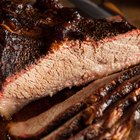
How to Steam a Brisket of Beef
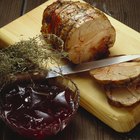
How to Cook a Center Cut Pork Loin in a ...

How to Cook a Beef Roast in a Roaster ...
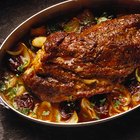
How to Use a Roaster for Pork

How to Cook a Frozen Burger in a Skillet

How to Cook Pulled Beef Without a Slow ...

How to Slow-Cook Meat in the Oven

How to Blanch Beef
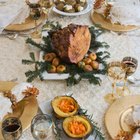
Shank Ham Cooking Directions

Can You Boil the Bacteria Out of ...

Food Safety Tips for Frozen Pork

How to Tell If a Pork Roast is Done
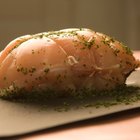
How to Braise Pork

What Does Spoiled Meat Smell Like When ...
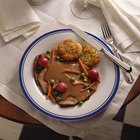
How to Use an Electric Roaster to Slow ...

How to Get Skirt Steak Tender
How to Cook Boneless Top Chuck Steak in ...
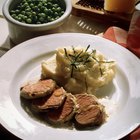
How to Cook Marinated Pork Loin From a ...

How to Salt Cure Jerky
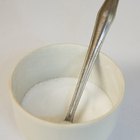
How to Brine a Smoked Beef Brisket
References
Writer Bio
Anne Hirsh has been writing and editing for over 10 years. She has hands-on experience in cooking, visual arts and theater as well as writing experience covering wellness and animal-related topics. She also has extensive research experience in marketing, small business, Web development and SEO. Hirsh has a bachelor's degree in technical theater and English and post-baccalaureate training in writing and computer software.
Photo Credits
Jupiterimages/Comstock/Getty Images